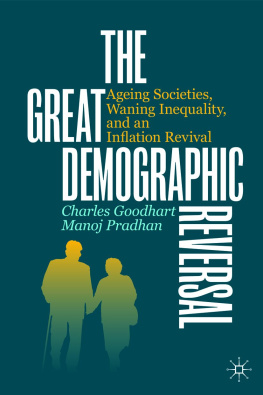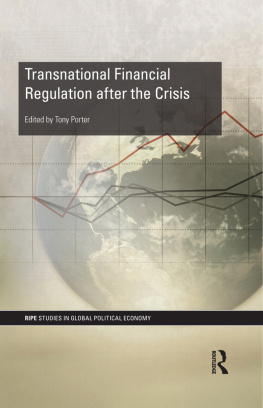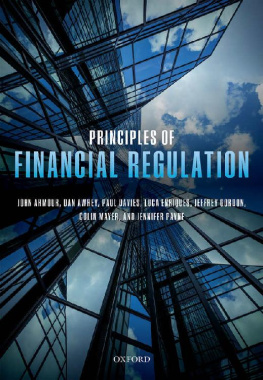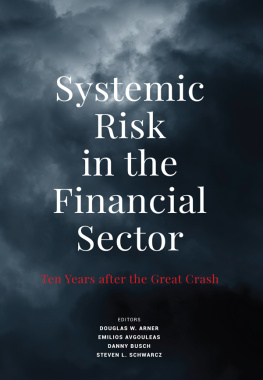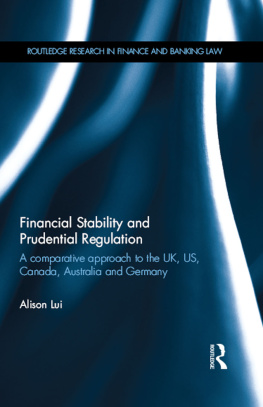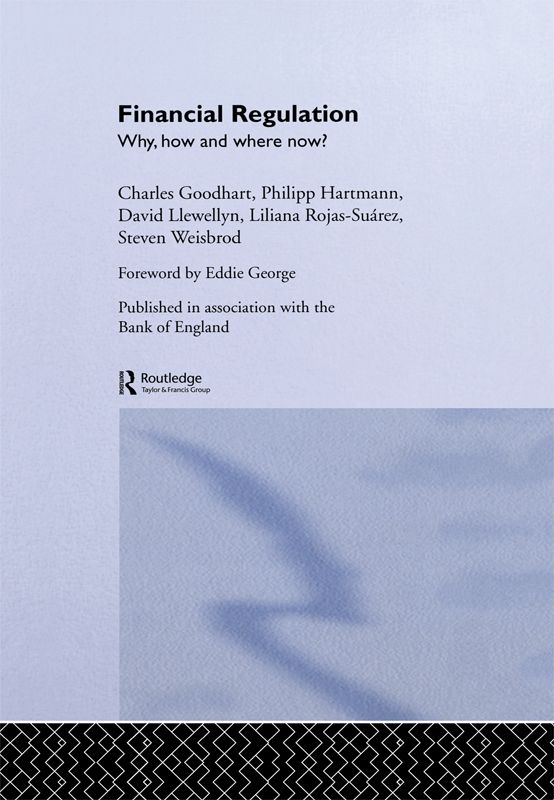The problem of financial regulation has returned to centre stage in the wake of the turbulence caused by global financial volatility. This volume, published in association with the Bank of England, responds to contemporary developments by presenting an important restatement of the purposes and objectives of financial regulation.
Regulators in the advanced economies are finding that the complexity of banking and the rise of financial intermediation are making external regulation via common ratios increasingly inappropriate. The authors argue that while there must always remain a role for external regulation, there can be no alternative to placing greater reliance on internal risk management. Thus, regulation is essentially about changing the behaviour of financial intermediaries through the creation of the appropriate incentive structure. This analysis is then applied to the nature and costs of regulatory problems in both the advanced and emerging economies, and appropriate techniques to recast the form of regulation are prescribed.
Published with a stimulating foreword by Eddie George, Governor of the Bank of England, this volume will be a vital resource for students of finance, banking and development, as well as for those involved in the formulation of policy.

London and New York
First published 1998
by Routledge
2 Park Square, Milton Park, Abingdon, Oxon, OX14 4RN
Simultaneously published in the USA and Canada
by Routledge
270 Madison Ave, New York NY 10016
Reprinted 1999, 2000, 2001, 2002, 2003
Transferred to Digital Printing 2005
Routledge is an imprint of the Taylor & Francis Group
1998 Bank of England
Typeset in Times by M Rules, London
All rights reserved. No part of this book may be reprinted or
reproduced or utilised in any form or by any electronic,
mechanical, or other means, now known or hereafter
invented, including photocopying and recording, or in any
information storage or retrieval system, without permission in
writing from the publishers.
British Library Cataloguing in Publication Data
A catalogue record for this book is available from the
British Library
Library of Congress Cataloging in Publication Data
Financial regulation: why, how, and where now?/Charles
Goodhart[et al.]; with a foreword by Eddie George.
p. cm.
Includes bibliographical references.
1. Financial services industry Law and legislation.
2. Banking law. I. Goodhart, C A. E. (Charles Albert Eric)
K1066.F565 1998
346.082-dc21 97-50002
ISBN 0-415-18504-1 (hbk)
ISBN 0-415-18505-X (pbk)
Contents
Figures
Banking problems worldwide, 198096
Pay-off structure indicating risk
Pay-off structure indicating caution
Typical pay structure
Deriving value at risk
Fat-tailed distribution of financial market returns
Non-linear risk and delta-normal VaR
Comparing credit return and market return distributions
Government bond prices: Norway and Sweden
Banks' gross borrowings from the central bank
Banks' net position with the central bank
Deposits to GDP: Argentina and Chile
Interest rates: Argentina and Mexico
Tables
Survey of banking problems, 1980 to spring 1996
The impact of bank unsoundness on the real sector
Banking problems for country groupings
Deficiencies in internal governance
Prompt corrective action provisions of the FDICIA
Comparison of value-at-risk techniques
Financial sector liberalisation
The jusen resolution package
Fiscal deficit and long-term debt
Mexico: credit growth in non-intervened banks
Mexico: bank restructuring programmes
The extent of bank restructuring programmes in Mexico and Chile
Costs of regulation
Model for the regulation of the financial system
Regulatory matrix
Regulators of banking, securities and insurance
Regulators of banks
Structure of regulatory institutions
Notes on authors
Charles Goodhart is the Norman Sosnow Professor of Banking and Finance at the London School of Economics. Before joining the LSE in 1985, he worked at the Bank of England for seventeen years as a monetary adviser, becoming a Chief Adviser in 1980. In 1997 he was appointed one of the outside independent members of the Bank of England's new Monetary Policy Committee. Earlier he had taught at Cambridge and the LSE. Besides numerous articles, he has written a couple of books on monetary history and a graduate monetary textbook, Money, Information and Uncertainty (2nd edn 1989). He has also published two collections of papers on monetary policy, Monetary Theory and Practice (1984) and The Central Bank and the Financial System (1995), and an institutional study, The Evolution of Central Banks, revised and republished (MIT Press) in 1988.
Philipp Hartmann is an economist in the Stage-III Division of the European Monetary Institute in Frankfurt. His main work is in the areas of banking regulation, in particular capital adequacy requirements and value-at-risk models, and international monetary economics, including foreign exchange market microstructure analysis and international currency competition. He is a Research Affiliate of the Centre for Economic Policy Research (CEPR, London) and has been an academic expert for the Centre for European Policy Studies (CEPS) working party The Transition to the Euro in Brussels. Dr Hartmann also organised (together with Charles Goodhart) the LSE conference Internal Risk Models and Financial Regulation in the City of London in 1996. He is the author of Capital Adequacy and Foreign Exchange Risk Regulation Theoretical Considerations and Recent Developments in Industrial Countries (Kredit und Kapital, 1997) and The Future of the Euro as an International Currency: A Transactions Perspective (CEPS Research Report, 1996). His current research interests include the consequences of financial innovations for regulation and incentive-oriented financial regulation as well as the external consequences and financial market impact of European Monetary Union. He holds a PhD in economics from the Ecole des Hautes Etudes en Sciences Sociales in Paris, an MA in monetary and macroeconomics from the Universit Catholique de Louvain in Belgium and a Diplom in Volkswirtschaftslehre from Mannheim University in Germany.


